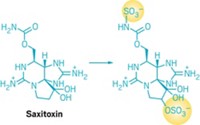Advertisement
Grab your lab coat. Let's get started
Welcome!
Welcome!
Create an account below to get 6 C&EN articles per month, receive newsletters and more - all free.
It seems this is your first time logging in online. Please enter the following information to continue.
As an ACS member you automatically get access to this site. All we need is few more details to create your reading experience.
Not you? Sign in with a different account.
Not you? Sign in with a different account.
ERROR 1
ERROR 1
ERROR 2
ERROR 2
ERROR 2
ERROR 2
ERROR 2
Password and Confirm password must match.
If you have an ACS member number, please enter it here so we can link this account to your membership. (optional)
ERROR 2
ACS values your privacy. By submitting your information, you are gaining access to C&EN and subscribing to our weekly newsletter. We use the information you provide to make your reading experience better, and we will never sell your data to third party members.
Biological Chemistry
Engineering cells to pump out fluoropolymers
Feeding fluoromalonate to microbes makes monomer for bioplastics
by Tien Nguyen
October 9, 2017
| A version of this story appeared in
Volume 95, Issue 40
Chemists have worked extensively to develop synthetic methods to incorporate fluorine into all types of molecules and materials. But one strategy they haven’t explored much is commandeering the machinery in living cells to biosynthetically produce fluorinated compounds. The challenge is that cells lack the ability to make many fluorinated organic compounds or to metabolize them. A team led by Michelle C. Y. Chang of the University of California, Berkeley, in trying to overcome that limitation, has engineered Escherichia coli host cells to convert a stable, nontoxic compound called fluoromalonate into 2-fluoro-3-hydroxybutyrate, a fluorinated diketide (Angew. Chem. Int. Ed. 2017 DOI: 10.1002/anie.201706696). Chang’s group previously focused on using fluoroacetate as a starting material, but it’s a compound that can poison cells when it’s metabolized. Now, using malonate transporters to introduce fluoromalonate into the cells, the chemists were able to improve the fluorinated compound’s uptake from micromolar to millimolar levels. They also demonstrated that a polymerase enzyme in the engineered cells can act on the fluorinated diketide monomer to produce the corresponding fluorinated poly(hydroxyalkanoate). Poly(hydroxyalkanoates) are found in products like biodegradable forks and spoons. Chang notes that using biosynthesis for commercial bioplastic production isn’t yet cost-effective, but this strategy could allow chemists to control polymer chain length and other properties in designer applications.





Join the conversation
Contact the reporter
Submit a Letter to the Editor for publication
Engage with us on Twitter